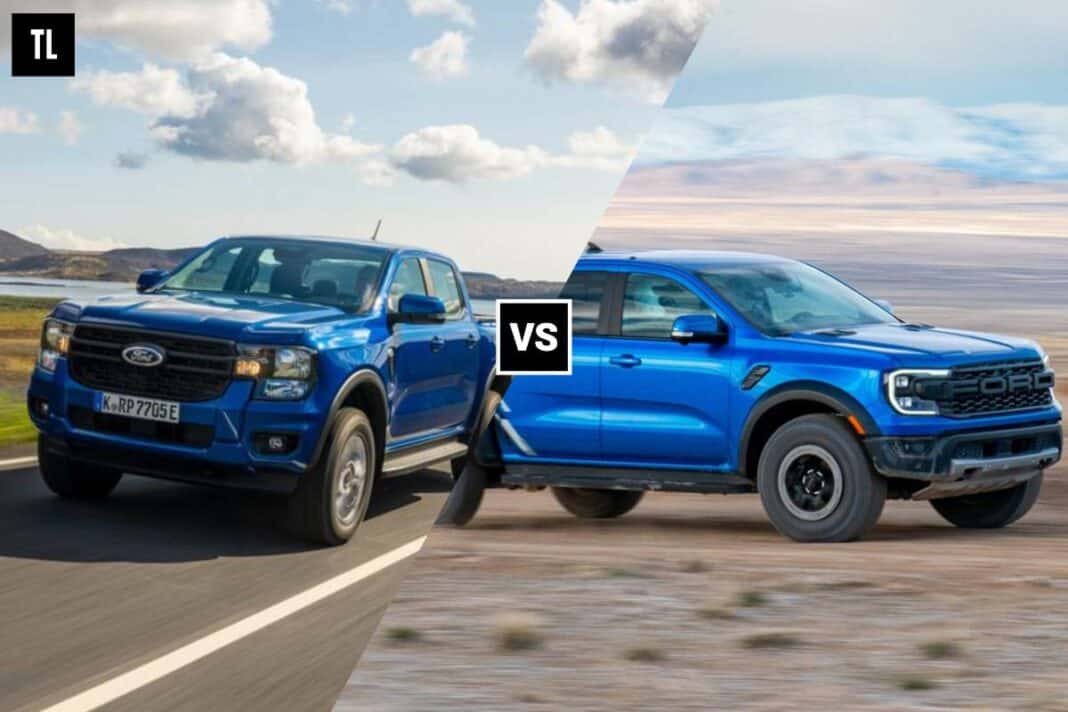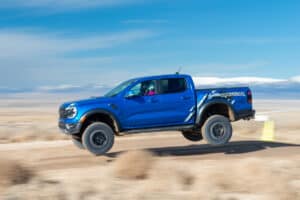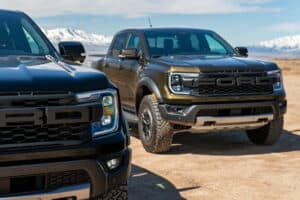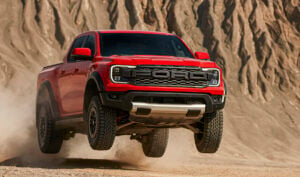New versions of the Toyota Tacoma, Chevrolet Colorado/GMC Canyon and Nissan Frontier have raised the bar since Ford brought the Ranger back to North America in 2019. Ford hit back with a comprehensively reworked Ranger for the 2024 model year, which continues largely unchanged into 2025.
Like the Colorado, the Ranger is now only offered in a single configuration – crew-cab, short-bed – but takes the fight to its rivals with a wide range of trims: entry-level XL, mid-market XLT, luxurious Lariat and – new to North America – off-road-focused Raptor. A week each with an XLT and Raptor revealed their differing personalities: which one is right for you?
Performance and Driving Impressions
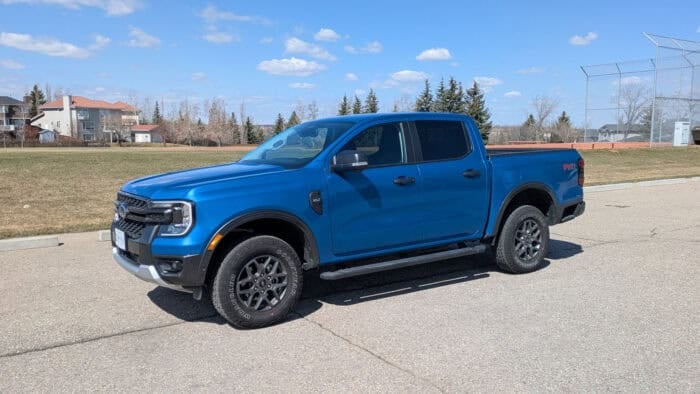
The 2025 Ford Ranger XLT has an MSRP of C$46,120 (US$39,595), to which our test vehicle added a further C$10,210 (US$7,400) in options, including swapping the regular, 2.3-litre inline-four for a 315-hp, 2.7-litre EcoBoost V6 (C$2,250/US$2,195).
The Raptor, meanwhile, weighs in at a chunky C$78,420 (US$55,820) MSRP. Our test truck had C$3,000 (US$2,200) of options fitted, pushing the final total to around 45% more than the humble XLT and underlining its niche status.

| Spec | Ranger XLT (V6) | Ranger Raptor |
|---|---|---|
| Engine | 2.7L Twin-Turbocharged V6 | 3.0L Twin-Turbocharged V6 |
| Horsepower | 315 hp | 405 hp |
| Torque | 400 lb-ft | 430 lb-ft |
| Transmission | 10-speed automatic | 10-speed automatic |
| Drivetrain | 4×4 | Standard 4WD |
| 0–60 mph (approx) | ~6.2 seconds | ~5.3 seconds |
| Max Towing Capacity | 7,500 lbs | 5,510 lbs |
| Max Payload | ~1,711 lbs | ~1,411 lbs |
The Raptor’s price hike does, however, buy you a pile of extra equipment, split between off-road practicalities and premium features. The extras include bespoke, Watts-link rear suspension; 2.5in Fox shock absorbers; locking front and rear axles; two towing packages; six upfitter switches to wire-in aftermarket accessories; and a 10-speaker B&O sound system.
Whether you choose the Raptor will depend as much on your budget as on how you use the truck. Its bespoke suspension and drivetrain enable it to go places where the XLT cannot…
Another difference is under the hood, where the Raptor’s 3-litre pushes the power to 405 hp and lets you know it’s there with a satisfying rumble on startup. Don’t expect to feel the difference in everyday driving, however, and away from Sport mode, neither truck is hair-trigger responsive.
Related – Ranger Raptor Assault School Shows Owners What Their Truck Can Really Do
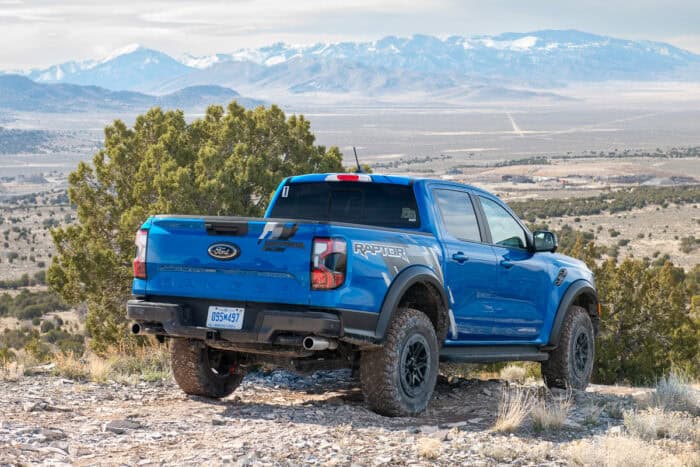
Extra drive modes help set the Raptor apart from the more everyday XLT – perfect if you plan to spend lots of time in the dirt. As on other Raptors, the Baja-mode exhaust – nominally for off-road-use only – is loud but entertaining in small doses.
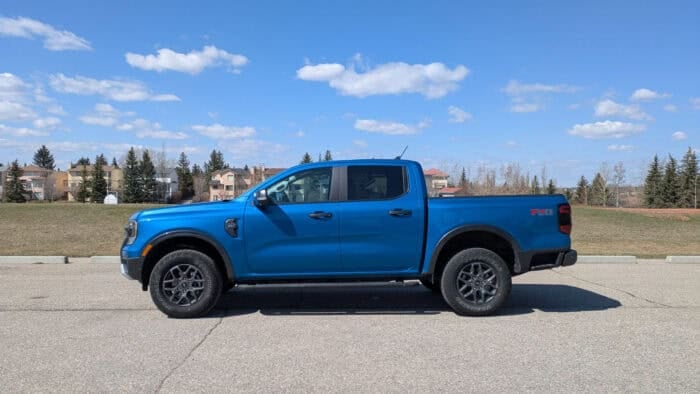
In both specs, the electric power steering tuning is a clear step forward from the 2019-generation Ranger, with a more confidence-inspiring, positive feel. But the greatest improvement is in ride comfort, for which Ford replaced the front control arms and moved the rear shocks and shock mounts outboard of the frame rails. The previous-gen truck struggled to settle at speed, but we found these latest models to be much more refined.
Perhaps surprisingly, it’s the supposedly off-road-focused Raptor that does on-road comfort best of all, noticeably taking care of larger dips and bumps with less of a thump than the XLT, which was tested here with the optional FX4 Off-Road Package (C$1,400/US$1,095).
Interior
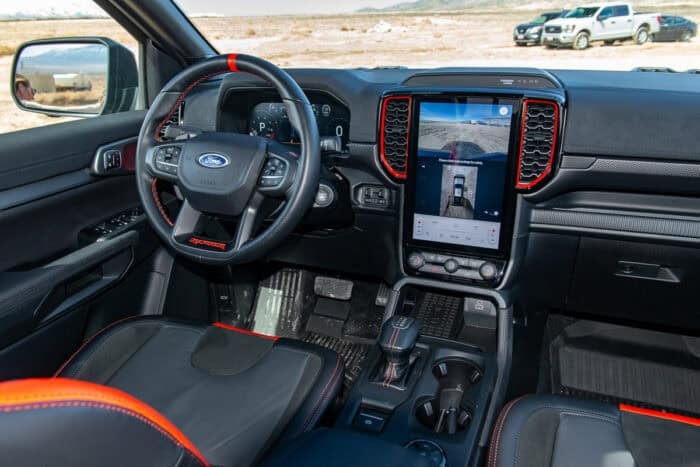
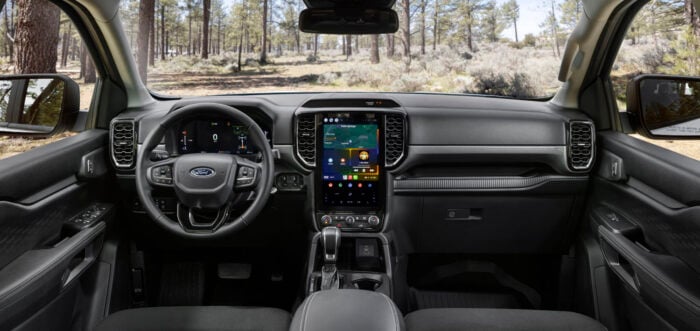
The improvements continue into a transformed interior, where the latest Ranger sheds the previous model’s dated dashboard for a contemporary look. A large, portrait screen is the centre of attention. In the Raptor it’s surrounded by fussy, grille-pattern vents with ‘Code Orange’ trim accents that are echoed in the door panels and leather seats.
We found those bucket-like seats to be more comfortable than the cloth-trimmed XLT’s, but not everyone will want the sporty look. As befitting its much higher price tag, however, the Raptor’s cabin feels considerably more premium, for example in the suede-like door cappings.
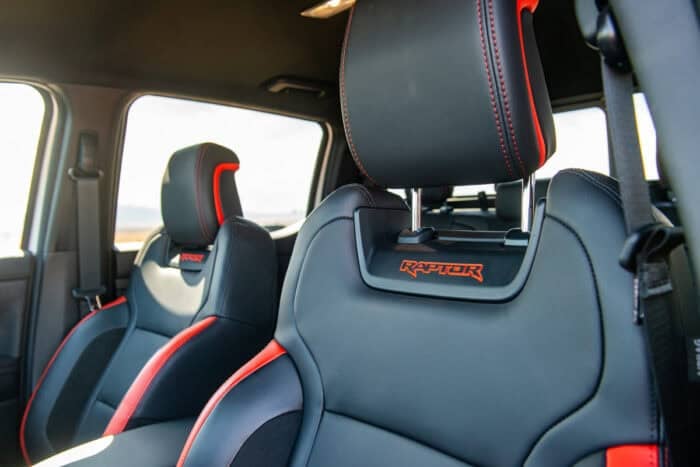
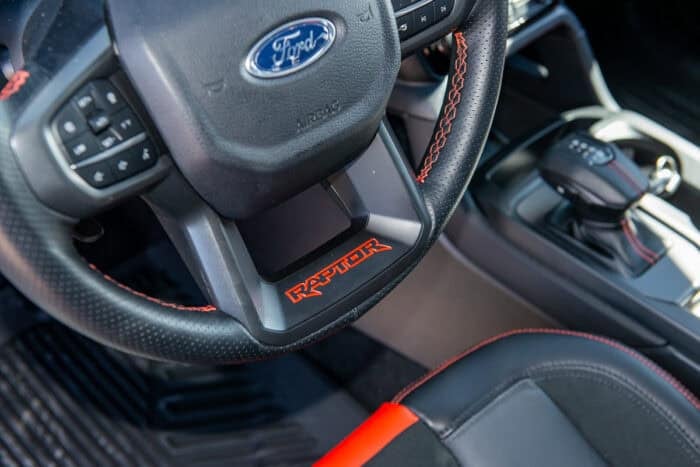
Ergonomically the new Ranger is mostly solid, but the blower speed buttons are tiny and feel squeezed between some already not-very-large temperature dials. The major HVAC controls are repeated at the base of the screen, but none of it is as easy to locate while driving as you might hope.
A welcome change to the interior accommodation is the ability to stow gear or groceries in the dry by folding the rear bench flat.
Styling
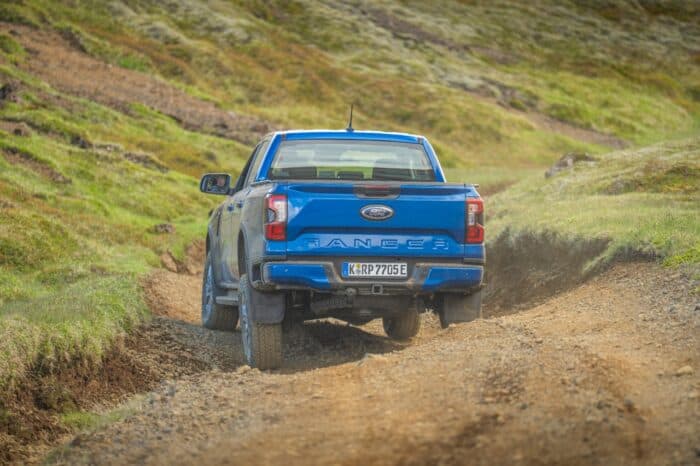
No doubt about it, this latest Ranger has sharper styling than the previous model – notably squarer, looking more like a scaled-down F-150. It’s no longer than before but the proportions have changed, with a couple of inches added to both the wheelbase and track width. With its flared arches, the Raptor is wider still.
For an extra C$295/US$215, you can finally incorporate a bed step into the side of the Ranger, as here on our XLT. For the minor aesthetic disruption to the smooth bed sides, the practicality is well worth the money.
Related – Ford Ranger XLT and Lariat Channel the 1990s with New 2022 Splash Package
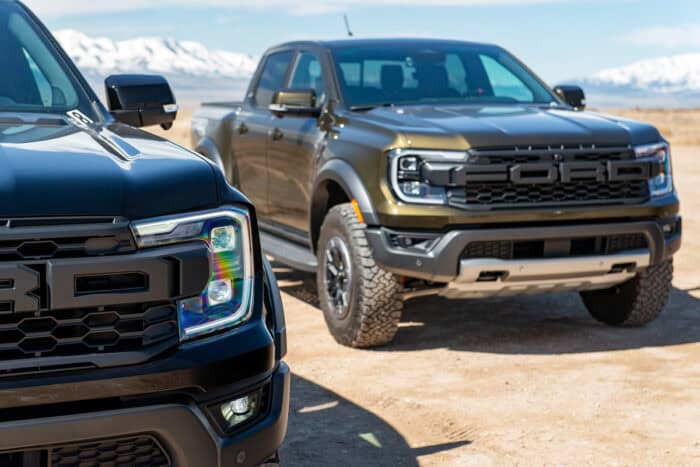
Aside from those wider arches and a Raptor-typical grille pattern with a Black Oval badge, our Ranger range-topping was visually distinguished by C$2,000/US$1,495, beadlock-capable, 17-inch wheels that allow the BF Goodrich A/T K03 tires to be run at low pressures off-road.
Like the Bronco Raptor we sampled last year, it was finished in understated, Shelter Green metallic paint, a nice contrast to the XLT’s bright Velocity Blue. Both trucks had the C$700/US$495 spray-in bed liner.
Takeaway
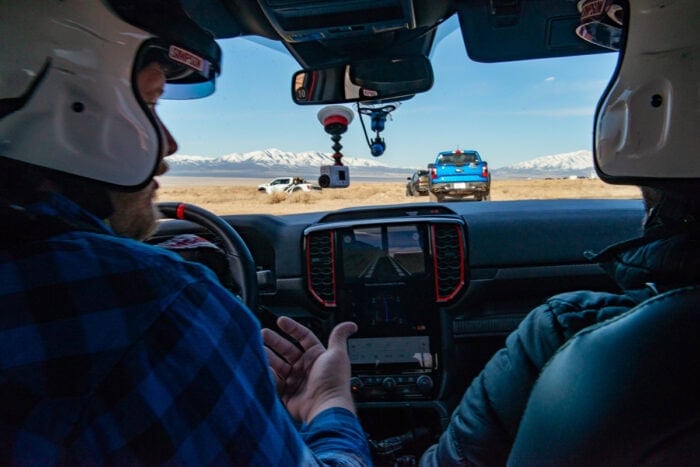
Pros
- Ride and cabin quality much improved
- Increased interior flexibility
- More manageable around town than an F-150
Cons
- Too-small HVAC controls
- Raptor’s capability comes at a price
- Disappointing fuel economy
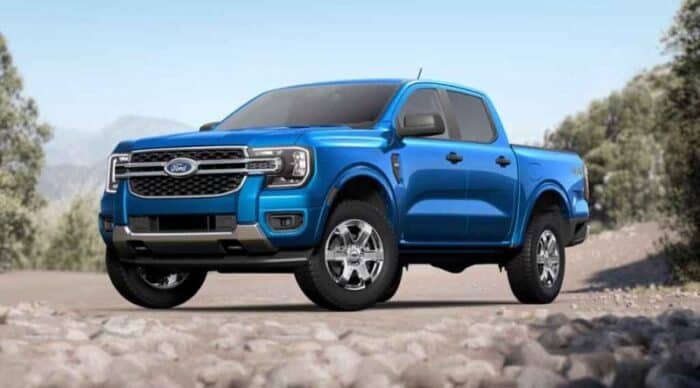
The latest Ranger is a clear improvement on the predecessor model. Whether you choose the Raptor will depend as much on your budget as on how you use the truck. Its bespoke suspension and drivetrain enable it to go places where the XLT cannot, and at speeds the XLT cannot match, but we suspect that the cheaper truck will suffice for most buyers’ off-road needs.
For them, the XLT has a winning mix of capability, style and – especially with the optional V6 – performance. But we’re still disappointed that it’s the Raptor – the supposedly off-road-focused, hooligan big-brother – that deliver the more comfortable ride in everyday use.
Shopping for a new pickup? Head over to all Truck Reviews here.

